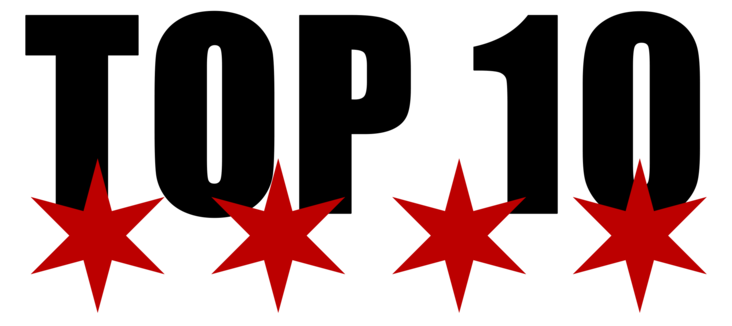For those who have been following, the 2019 offseason will mark the 10th-straight without a Chicago Bears compensatory draft pick. Some people remain hazy on what exactly these are. Without getting into the process too much, it’s basically when a team loses a top player to free agency but doesn’t spend a lot of money trying to replace them. They are thus rewarded with a pick anywhere from the 3rd to 7th rounds to “compensate” the loss.
Get it? Well, the Bears certainly haven’t.
Chicago has routinely shunned this option for almost a decade now, choosing to use a different approach of strong free agency presence intermingled with pinpoint drafting. The results have been wildly inconsistent, thus begging the question. Would it be better if the Bears went back to a more cautious free agency approach in order to collect comp picks?
The best way to answer that is by determining whether they made any sort of significant difference when the Bears actually had them.
Subscribe to the BFR podcast and ride shotgun with Dave and Ficky as they break down Bears football like nobody else.
Chicago Bears compensatory pick periods and whether they moved the needle
1996-2003 period: 13
Easily the strongest commitment by the franchise to this process came during this timeline. Former GMs Mark Hatley and Jerry Angelo seemed to like the idea of stockpiling as many extra selections as possible, granting the team more flexibility to take more chances on given talent. For the most part, the comp picks themselves were largely names not worth remembering. However, they did manage to secure two quality names.
One was safety Mike Green who helped out on defense for a number of years. The other was Patrick Mannelly. He would become the teams’ long snapper sixteen seasons. Among the other names picked during that period were Olin Kreutz, Marty Booker, Jerry Azumah, Brian Urlacher, Mike Brown, Charles Tillman, and Lance Briggs. Much of that forged the foundation of their Super Bowl team in 2006.
2004-2007 period: 0
Angelo took a step in a different direction by the time Lovie Smith arrived in 2004. He became more aggressive in free agency, trying to get his team to a more competitive footing after two-straight disappointing seasons. It certainly worked out as the Bears made the playoffs in 2005 and a year later went to the Super Bowl. The question is did the lack of flexibility from no comp picks hurt their draft prowess.
Well, yes and no.
The Bears didn’t score the same number of huge hits as they did during the previous stretch. However, they did still collect an impressive array of talent. Among them were Tommie Harris, Nathan Vasher, Devin Hester, Greg Olsen, and Corey Graham. That’s solid work in just a span of four years, even if they made the misguided decision to trade Olsen. That said this group didn’t have near the longevity of the previous one.
2008-2009 period: 6
Angelo made his return to the compensatory pool after a disappointing 2007 season, trying to rebuild an aging roster with some youth infusions. Only one of the actual six picks became anything of note as Lance Louis was a decent starting guard. That said, the added flexibility did at least seem to have an effect as the Bears secured a number of solid talents.
Chiefs among them were Matt Forte, Henry Melton, and Johnny Knox. Forte became one of the best running backs in franchise history. Melton was a Pro Bowler in 2012 and Knox went to one as a kick returner. For just a two-year span, that’s a strong hit rate. Sadly injuries undermined both Melton and Knox. It wasn’t enough to make the playoffs though.
2010-Present period: 0
As the great core the Bears had built began to age in earnest, their desperation to make one more run at the Super Bowl began to increase. They spent heavily in 2010 on Julius Peppers and would continue to do so each year after that. Not that it helped much. From that year to the most recent of 2018, the Bears made the playoffs only twice.
Their draft success could best be called mixed over that period. They had a few standouts including Alshon Jeffery, Kyle Long, Kyle Fuller and Charles Leno during the first five years. It wasn’t until Ryan Pace arrived that they seemed to kick it up another notch with Cody Whitehair, Jordan Howard, Mitch Trubisky, Eddie Jackson, and Tarik Cohen all becoming Pro Bowlers. Not to mention other quality talents like Eddie Goldman, Roquan Smith, and James Daniels.
So does having compensatory picks truly sway the direction of the team?
The simple answer is only if those actual selections become good players. If they don’t, then it doesn’t really affect the general outcome. Why? During the two periods where the Bears had 19 compensatory picks total which gave them 95 in all, they selected 11 eventual Pro Bowl players. In the two eras with zero, they had 81 in all and scooped up 14 Pro Bowlers.
So there wasn’t much of a difference at all. However, there is something key to note here. This was during a period when compensatory picks couldn’t be traded. That has since changed. One has to wonder what Pace would do if he had say two or three extra picks with which to move around the board. Something worth pondering as free agency prepares to get underway.












